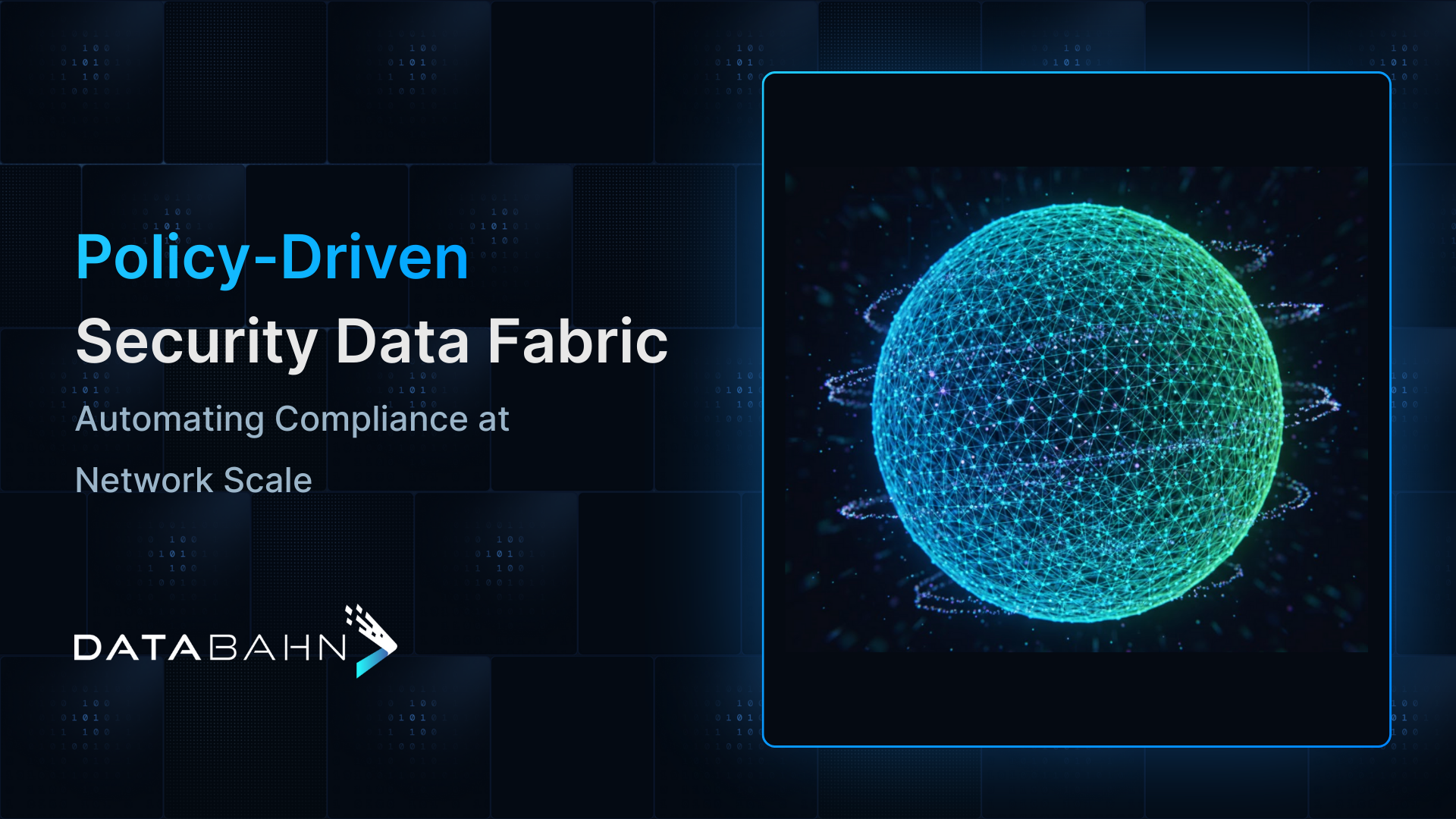We highlighted how detection and compliance break down when data isn’t reliable, timely, or complete. This second piece builds on that idea by looking at the work behind the pipelines themselves — the data engineering automation that keeps security data flowing.
Enterprise security teams are spending over 50% of their time on data engineering tasks such as fixing parsers, maintaining connectors, and troubleshooting schema drift. These repetitive tasks might seem routine, but they quietly decide how scalable and resilient your security operations can be.
The problem here is twofold. First, scaling data engineering operations demands more effort, resources, and cost. Second, as log volumes grow, and new sources appear, every manual fix adds friction. Pipelines become fragile, alerting slows, and analysts lose valuable time dealing with data issues instead of threats. What starts as maintenance quickly turns into a barrier to operational speed and consistency.
Data Engineering Automation changes that. By applying intelligence and autonomy to the data layer, it removes much of the manual overhead that limits scale and slows response. The outcome is cleaner, faster, and more consistent data that strengthens every layer of security.
As we continue our Cybersecurity Awareness Month 2025 series, it’s time to widen the lens from awareness of threats to awareness of how well your data is engineered to defend against them.
The Hidden Cost of Manual Data Engineering
Manual data engineering has become one of the most persistent drains on modern security operations. What was once a background task has turned into a constant source of friction that limits how effectively teams can detect, respond, and ensure compliance.
When pipelines depend on human intervention, small changes ripple across the stack. A single schema update or parser adjustment can break transformations downstream, leading to missing fields, inconsistent enrichment, or duplicate alerts. These issues often appear as performance or visibility gaps, but the real cause lies upstream in the pipelines themselves.
The impact is both operational and financial:
- Fragile data flows: Every manual fix introduces the risk of breaking something else downstream.
- Wasted engineering bandwidth: Time spent troubleshooting ingest or parser issues takes away from improving detections or threat coverage.
- Hidden inefficiencies: Redundant or unfiltered data continues flowing into SIEM and observability platforms, driving up storage and compute costs without adding value.
- Slower response times: Each break in the pipeline delays investigation and reduces visibility when it matters most.
The result is a system that seems to scale but does so inefficiently, demanding more effort and cost with each new data source. Solving this requires rethinking how data engineering itself is done — replacing constant human oversight with systems that can manage, adapt, and optimize data flows on their own. This is where Automated Data Engineering begins to matter.
What Automated Data Engineering Really Means
Automated Data Engineering is not about replacing scripts with workflows. It is about building systems that understand and act on data the way an engineer would, continuously and intelligently, without waiting for a ticket to be filed.
At its core, it means pipelines that can prepare, transform, and deliver security data automatically. They can detect when schemas drift, adjust parsing rules, and ensure consistent normalization across destinations. They can also route events based on context, applying enrichment or governance policies in real time. The goal is to move from reactive maintenance to proactive data readiness.
This shift also marks the beginning of Agentic AI in data operations. Unlike traditional automation, which executes predefined steps, agentic systems learn from patterns, anticipate issues, and make informed decisions. They monitor data flows, repair broken logic, and validate outputs, tasks that once required constant human oversight.
For security teams, this is not just an efficiency upgrade. It represents a step change in reliability. When pipelines can manage themselves, analysts can finally trust that the data driving their alerts, detections, and reports is complete, consistent, and current.
How Agentic AI Turns Automation into Autonomy
Most security data pipelines still operate on a simple rule: do exactly what they are told. When a schema changes or a field disappears, the pipeline fails quietly until an engineer notices. The fix might involve rewriting a parser, restarting an agent, or reprocessing hours of delayed data. Each step takes time, and during that window, alerts based on that feed are blind.
Now imagine a pipeline that recognizes the same problem before it breaks. The system detects that a new log field has appeared, maps it against known schema patterns, and validates whether it is relevant for existing detections. If it is, the system updates the transformation logic automatically and tags the change for review. No manual intervention, no lost data, no downstream blind spots.
That is the difference between automation and autonomy. Traditional scripts wait for failure; Agentic AI predicts and prevents it. These systems learn from historical drift, apply corrective actions, and confirm that the output remains consistent. They can even isolate an unhealthy source or route data through an alternate path to maintain coverage while the issue is reviewed.
For security teams, the result is not just faster operations but greater trust. The data pipeline becomes a reliable partner that adapts to change in real time rather than breaking under it.
Why Security Operations Can’t Scale Without It
Security teams have automated their alerts, their playbooks, and even their incident response, but their pipelines feeding them still rely on human upkeep. This results in poor performance, accuracy, and control as data volumes grow. Without Automated Data Engineering, every new log source or data format adds more drag to the system. Analysts chase false positives caused by parsing errors, compliance teams wrestle with unmasked fields, and engineers spend hours firefighting schema drift.
Here’s why scaling security operations without an intelligent data foundation eventually fails:
- Data Growth Outpaces Human Capacity
Ingest pipelines expand faster than teams can maintain them. Adding engineers might delay the pain, but it doesn’t fix the scalability problem. - Manual Processes Introduce Latency
Each parser update or connector fix delays downstream detections. Alerts that should trigger in seconds can lag minutes or hours. - Inconsistent Data Breaks Automation
Even small mismatches in log formats or enrichment logic can cause automated detections or SOAR workflows to misfire. Scale amplifies every inconsistency. - Compliance Becomes Reactive
Without policy enforcement at the pipeline level, sensitive data can slip into the wrong system. Teams end up auditing after the fact instead of controlling at source. - Costs Rise Faster Than Value
As more data flows into high-cost platforms like SIEM, duplication and redundancy inflate spend. Scaling detection coverage ends up scaling ingestion bills even faster.
Automated Data Engineering fixes these problems at their origin. It keeps pipelines aligned, governed, and adaptive so security operations can scale intelligently — not just expensively.
The Next Frontier: Agentic AI in Action
The next phase of automation in security data management is not about adding more scripts or dashboards. It is about bringing intelligence into the pipelines themselves. Agentic systems represent this shift. They do not just execute predefined tasks; they understand, learn, and make decisions in context.
In practice, an agentic AI monitors pipeline health continuously. It identifies schema drift before ingestion fails, applies the right transformation policy, and confirms that enrichment fields remain accurate. If a data source becomes unstable, it can isolate the source, reroute telemetry through alternate paths, and notify teams with full visibility into what changed and why.
These are not abstract capabilities. They are the building blocks of a new model for data operations where pipelines manage their own consistency, resilience, and governance. The result is a data layer that scales without supervision, adapts to change, and remains transparent to the humans who oversee it.
At Databahn, this vision takes shape through Cruz, our agentic AI data engineer. Cruz is not a co-pilot or assistant. It is a system that learns, understands, and makes decisions aligned with enterprise policies and intent. It represents the next frontier of Automated Data Engineering — one where security teams gain both speed and confidence in how their data operates.
From Awareness to Action: Building Resilient Security Data Foundations
The future of cybersecurity will not be defined by how many alerts you can generate but by how intelligently your data moves. As threats evolve, the ability to detect and respond depends on the health of the data layer that powers every decision. A secure enterprise is only as strong as its pipelines, and how reliably they deliver clean, contextual, and compliant data to every tool in the stack.
Automated Data Engineering makes this possible. It creates a foundation where data is always trusted, pipelines are self-sustaining, and compliance happens in real time. Automation at the data layer is no longer a convenience; it is the control plane for every other layer of security. Security teams gain the visibility and speed needed to adapt without increasing cost or complexity. This is what turns automation into resilience — a data layer that can think, adapt, and scale with the organization.
As Cybersecurity Awareness Month 2025 continues, the focus should expand beyond threat awareness to data awareness. Every detection, policy, and playbook relies on the quality of the data beneath it. In the next part of this series, we will explore how intelligent data engineering and governance converge to build lasting resilience for security operations.



.png)











.avif)

.avif)








